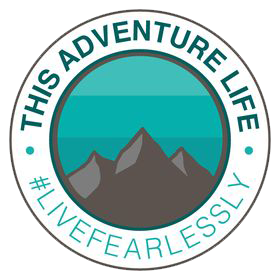Light Pollution, our eyes, and the night skies. Wait, what is light pollution to begin with? How are these things correlated when it comes to photographing the Milky Way? The internet has done wonders for popularizing the Milky Way and the Aurora Borealis. Google, Facebook, Instagram, Pinterest – these are all great sources for inspiration. What exactly does it take to see this with the naked eye? Let us dive into these seldom mentioned factors- in detail! WARNING: Science is not easy to explain, you will need your thinking caps!
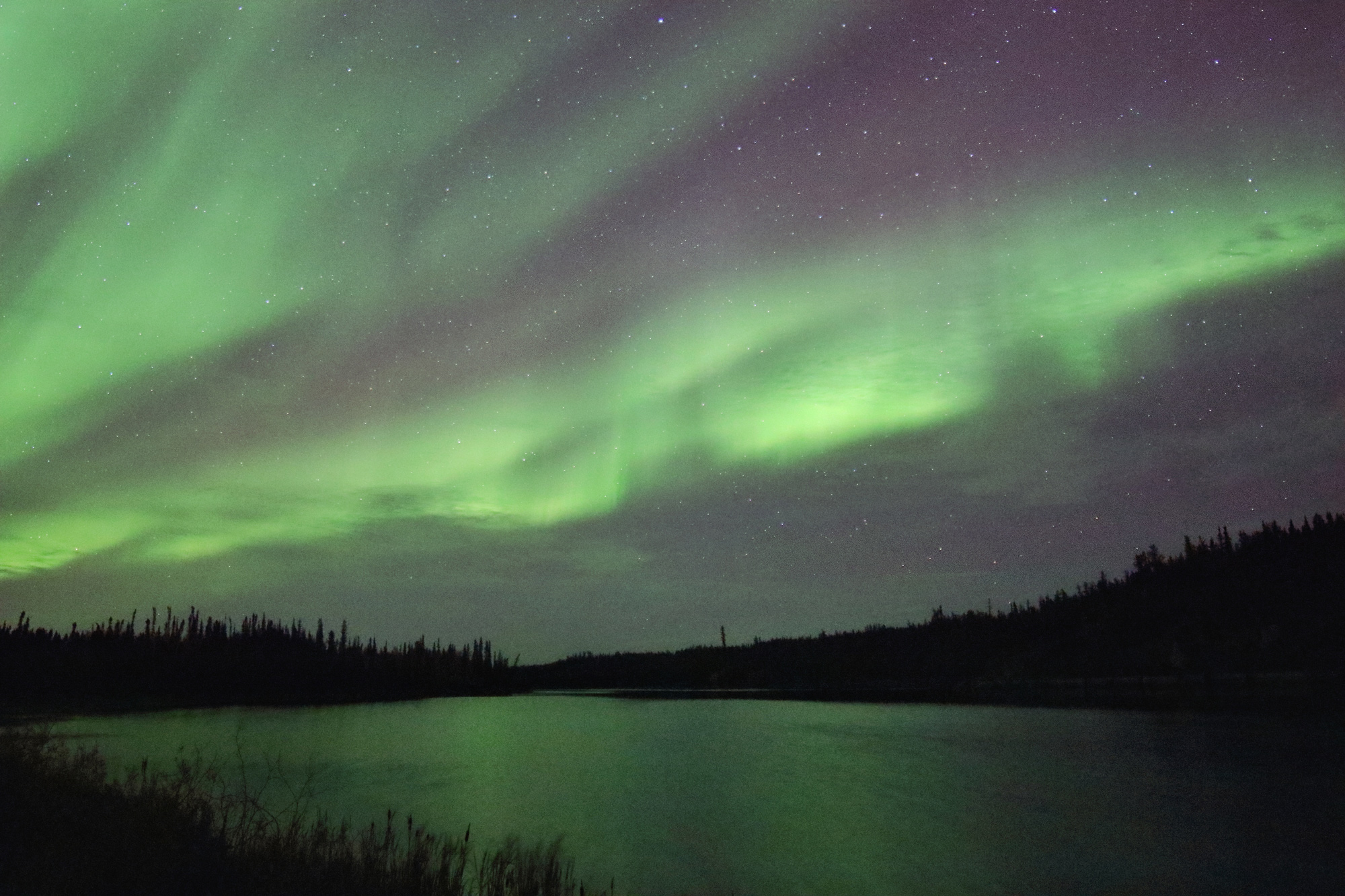
All photos in this article were shot during a new moon.
Part I: Our Eyes
First and foremost, do not expect to see what you see in photos!!!
You hear that? I put 3 exclamation points on this one so it can be loud and clear. Unless some star explodes in our solar system that is close and powerful enough to light up space dust and gases, we will not see the beauty in its entirety. So, wait, you’re telling me all those dynamic colors present in photos are just visual effects? Allow me to explain.
Physiological Limitations
Our eyes have 2 types of photoreceptor cells that perceive vision: cones and rods. Cones are responsible for allowing us to see colors in bright to dim lighting, while rods activate in dim to dark environments at the expense of color perception. In other words, cones deactivate in the dark, while rods enter full operation. Rods do not mediate color like cones do. What we’re left with, then, is night vision being led by rods – the photoreceptor that cannot detect color. This is why we see in shades of black and gray in the dark.
So, wait, you’re telling me all those dynamic colors present in photos are just visual effects? Not quite. Just because our eyes cannot detect the colors, does not mean that they are not there. There is simply not enough bright light at night to be perceived by our cones. Digital cameras (and even some phones) are able to collect more light if set up properly and thus yield brighter stars and color with a long exposure photo. Brighten this up even more in post processing, and you have yourself a beaut! A beaut that IS there; our eyes simply cannot fully perceive it all.
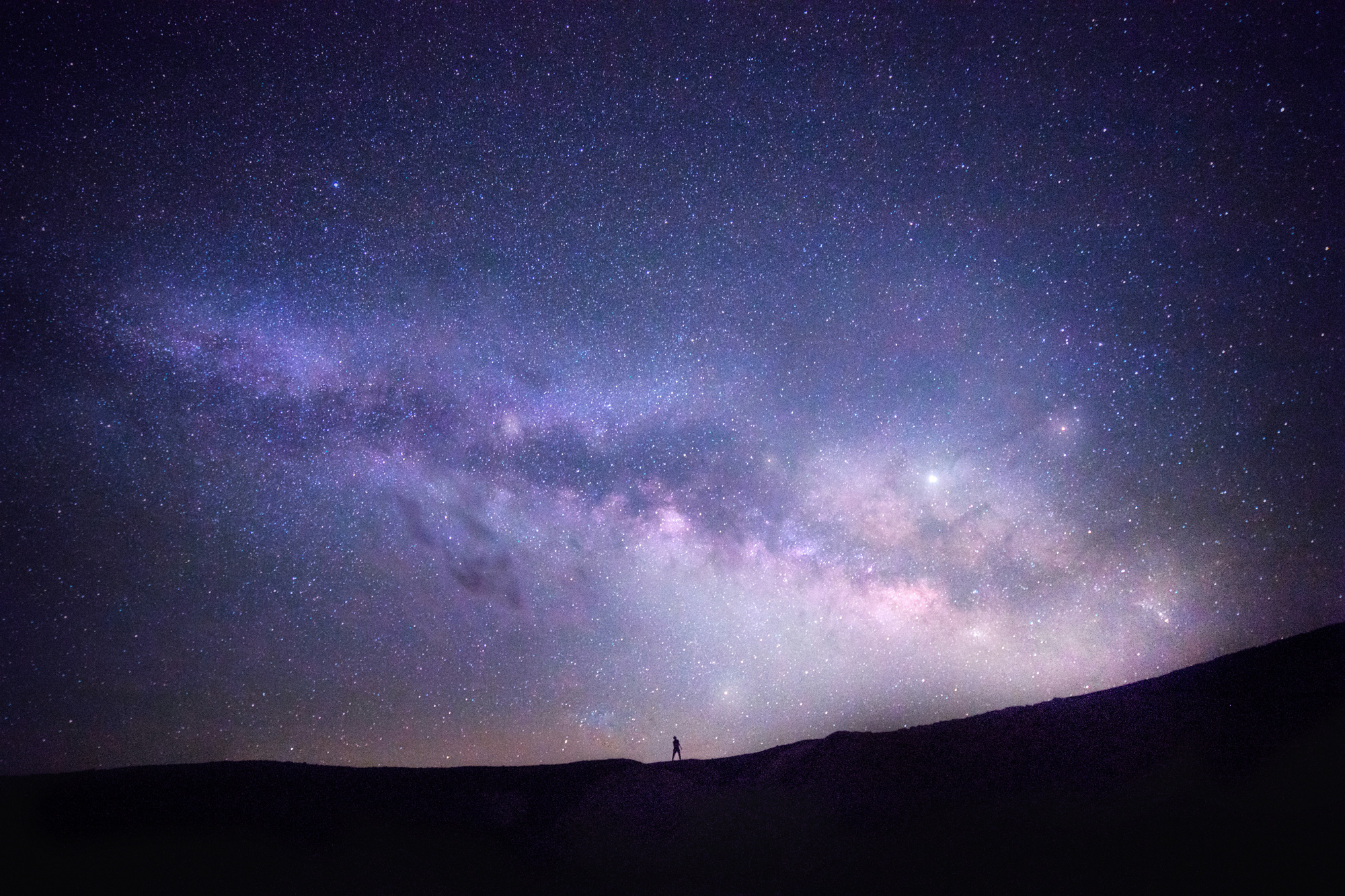
Now that we have that of the way, we get to the million dollar question: what is it exactly that our naked eye sees when we look at the Milky Way in perfect conditions? The Milky Way, with the naked eye, will look like a feint gray cloud stretching in the sky.
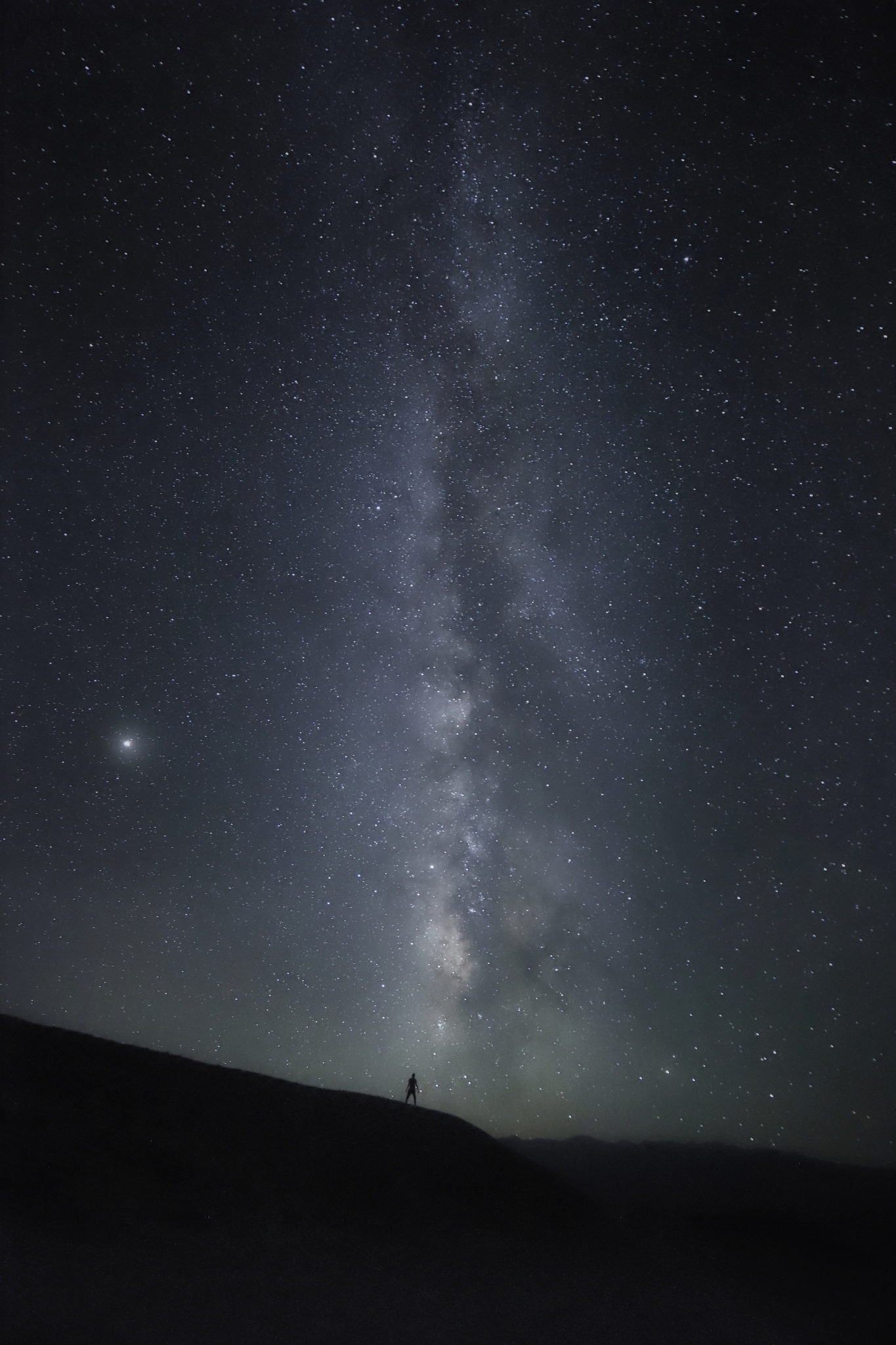
The same is true with the northern lights a.k.a aurora borealis. The below photo was shot under what appeared to be an aurora-less sky to the eye. With the exposure set to 6 seconds, the camera caught a sight of red curtains in the heavens. NOTE: the northern lights are a lot more visible the more intense they are on a given night.

General tips for enhanced night vision:
- Allow at least 10 minutes to adjust to the dark. Allow for 30+ minutes for even better vision
- The moment you turn that cell phone on and look at it, your eyes will need to readjust. Use a blue light filter or night mode if your cell phone/apps support it
- Red flashlights will not force you to readjust your night vision
- Vitamin A! Vitamin A? Yup, it promotes healthy night vision.
Now, you’ve driven 30 minutes outside of town, have all the above tips in mind and are ready to begin photographing (or observing) the Milky Way, right? Wrong!
Part II: Light Pollution – it’s Real and a Real Problem
Light pollution is the inevitable glow of light exerted into the sky by a city or town. I’ve met many people who are not familiar with this phenomenon because they’ve never seen an actual dark sky, much less, photographed it. All those pretty lights we see in Las Vegas at night emits light into the sky in the form of a dome if observed from afar. I’ll use the below images as examples.
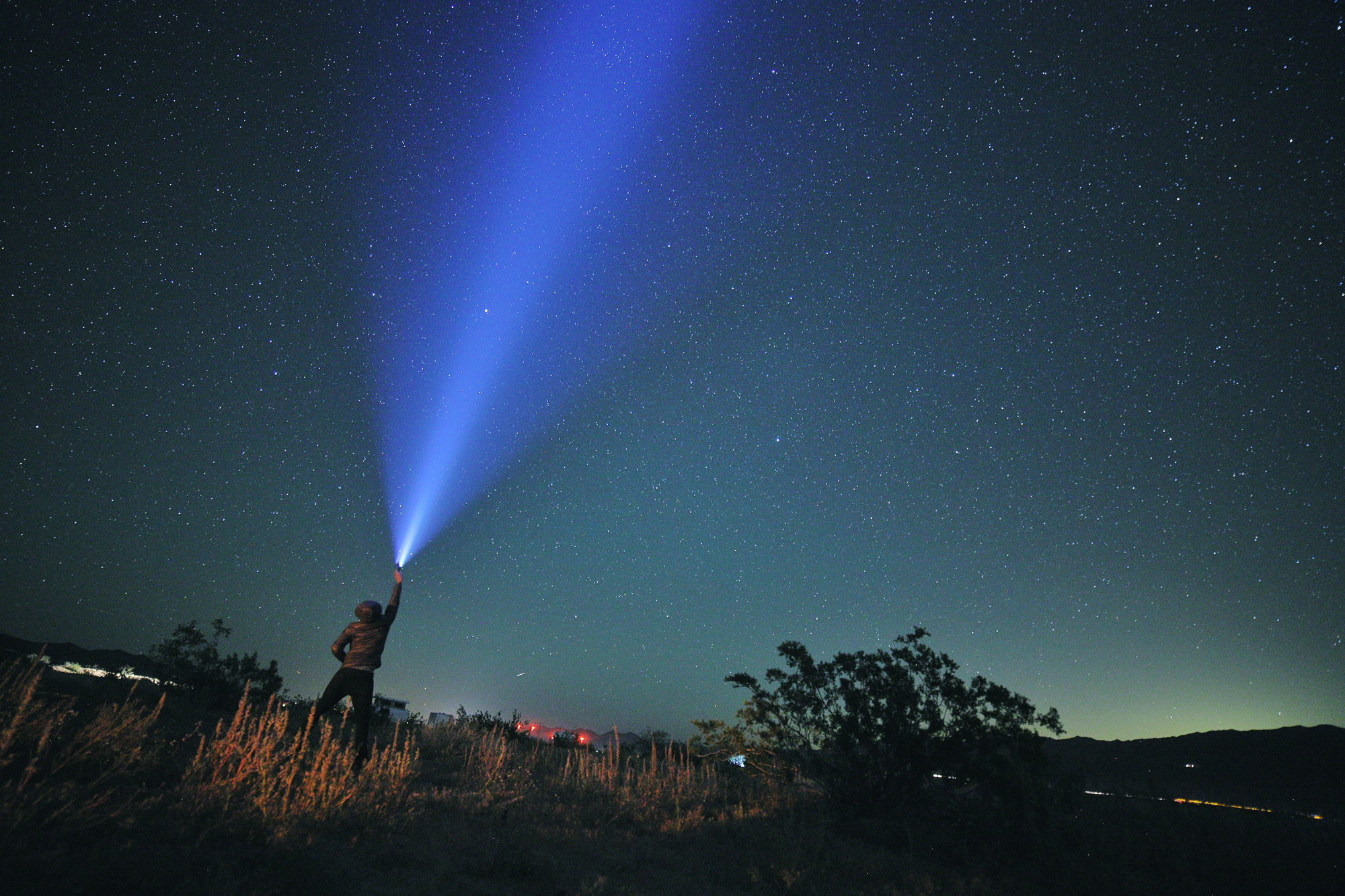
I specifically chose 2 photos with flashlights in them to explain the effect of light pollution. Let’s pretend the flashlight is Las Vegas, and the cone of light is the effect of light pollution as a result of Vegas’s bright night lights. We are at ground level, where the LED bulb is in the flashlight. If we look up? Well, we are surrounded by light and therefore can’t see more than just the brightest of stars while standing inside the city.
And when there are clouds? The light gets trapped and reflected back down.
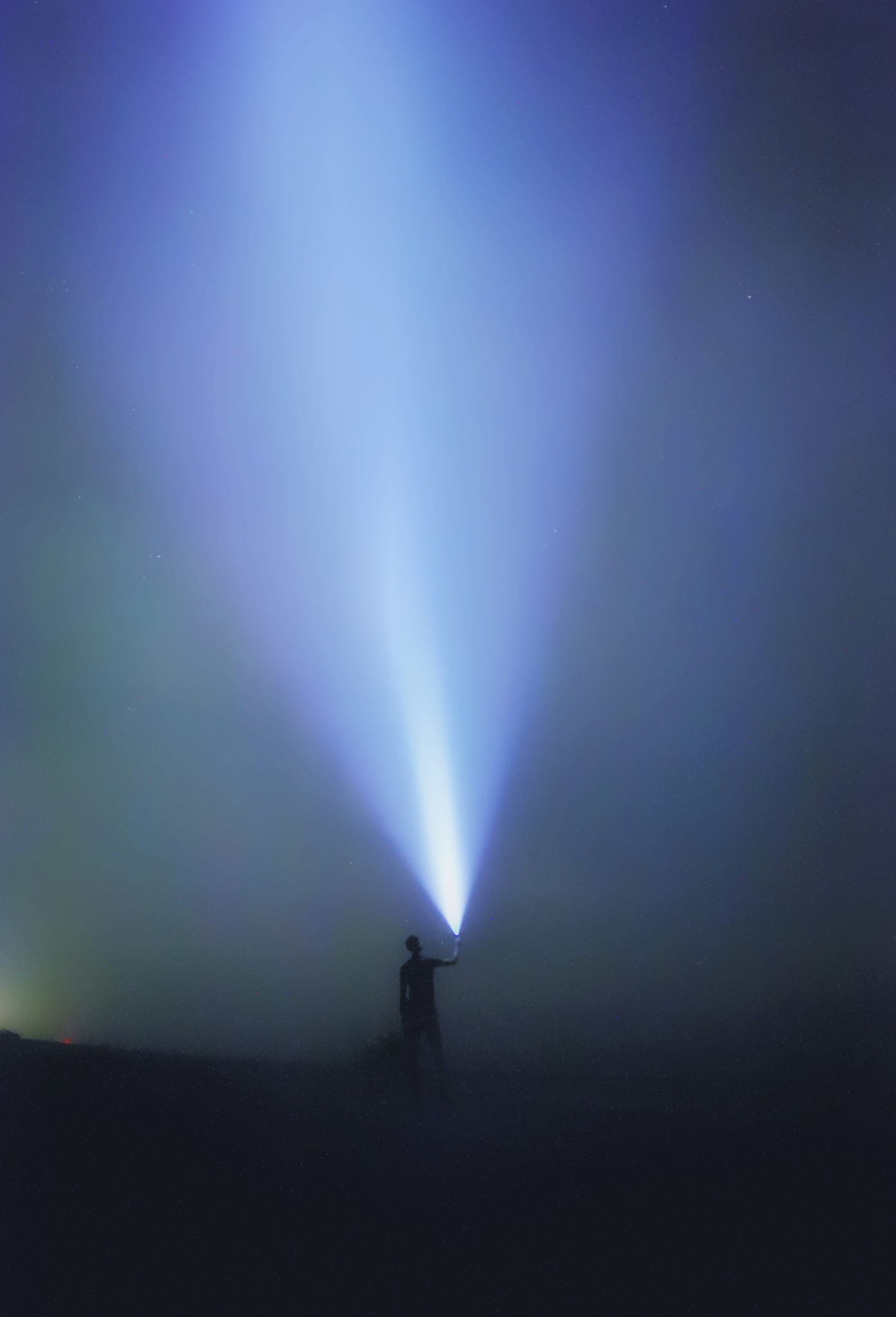
So what do we need, then, to correctly approach the night skies? Incoming tips!
To properly photograph the Milky Way or observe the night skies, you must be AT LEAST 1 hour away from any city or town. 30 minutes, while helpful, is not enough. The direction of any surrounding cities are also to be considered. If you are north of a big city and intend to photograph the Milky Way, you will most likely get light pollution in your shot within close proximity of the Milky Way. This is because the Milky Way and the light pollution will be in the southern skies. It may or may not work in your favor. Below is a photo I took in Valley of Fire, 1 hour northeast of Las Vegas. Facing southeast, essentially facing Las Vegas (and with cloudy skies), that light on the horizon is not the sun nor the moon. Can you guess what time this photo was taken?
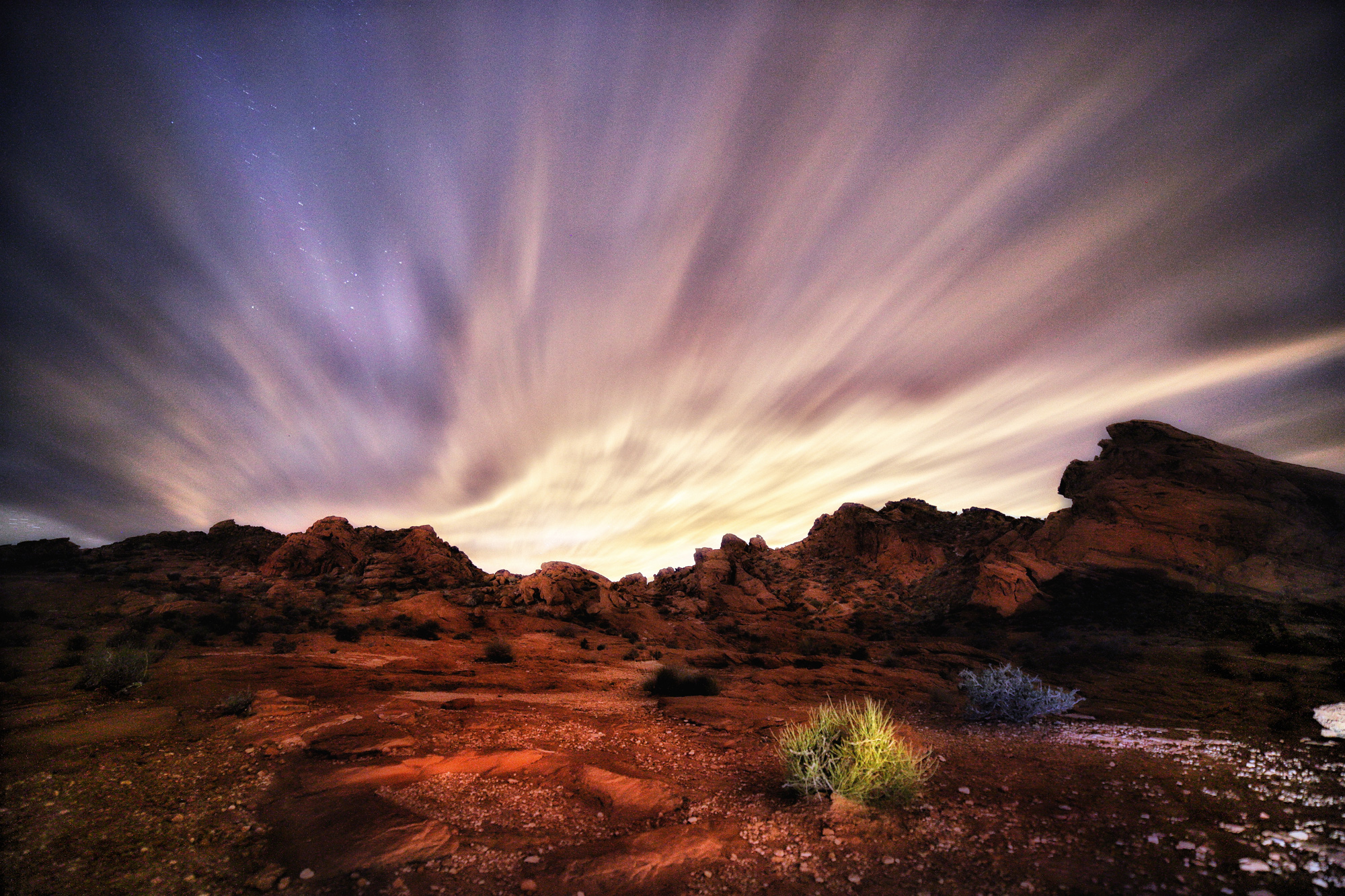
Light Pollution Maps
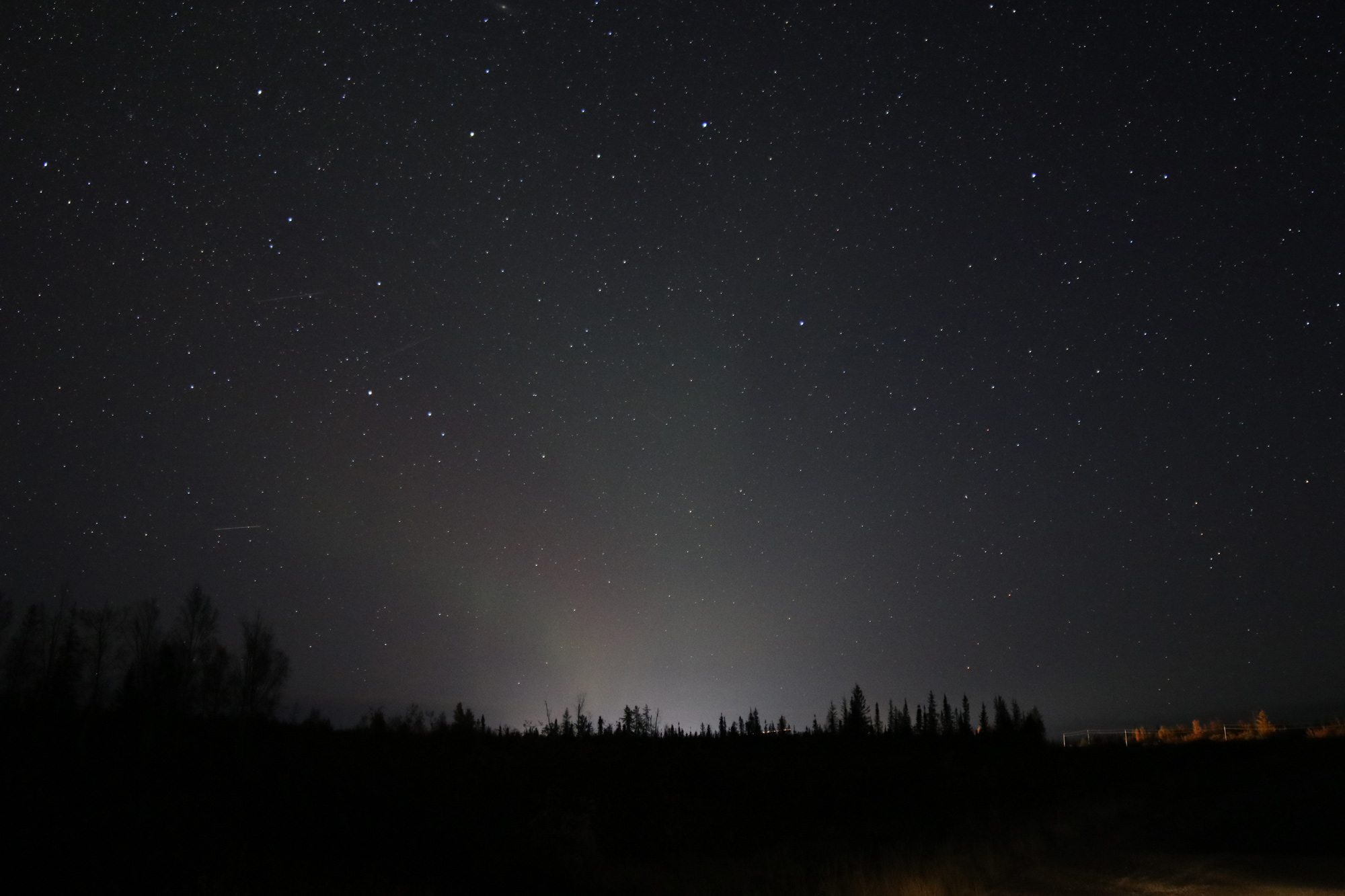
There are wonderful resources out there to help you find a dark spot with the least amount of light pollution. It may look weird and scary at first but DarkSkyFinder and LightPollutionMap are my go-to’s.
Don’t be daunted by the colorful setup on these light pollution maps. In white are the brightest areas, followed by the color spectrum red (2nd brightest) to blue and black (darkest).
Take a moment a look at how overall bright Europe is in its cluster of big cities and towns. Folks in the Netherlands, Belgium, and England are all in quite the pickle if they want to be in an isolated, dark zone (anything other than blue or black is not ideal. Green is stretching it).
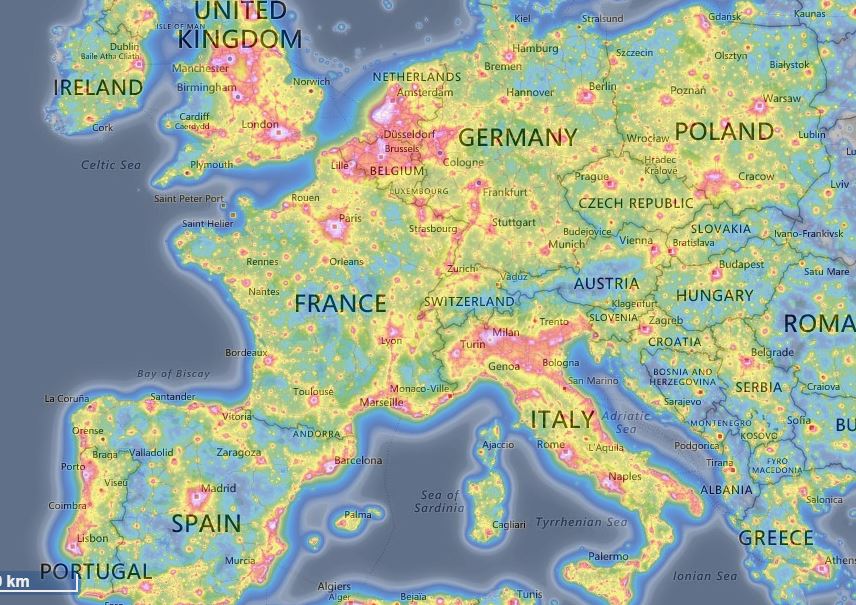

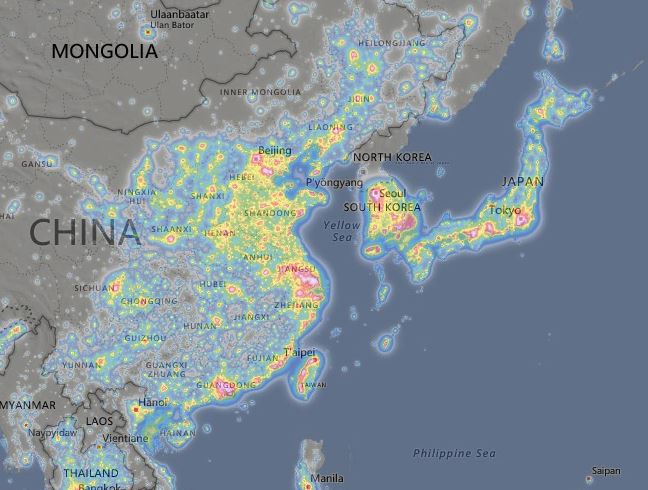
Final food for thought
Next time you’re out there in the middle of the night, in the middle of nowhere, look up at the stars and remember that there are millions of people who aren’t as fortunate to see what you see. There are human beings in this world that have to travel to a different country to see what we get to see on a large scale in the U. S (and any other countries with many dark zones). It’s a luxury and a privilege.
